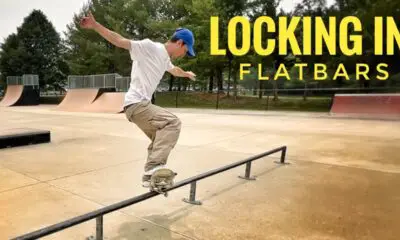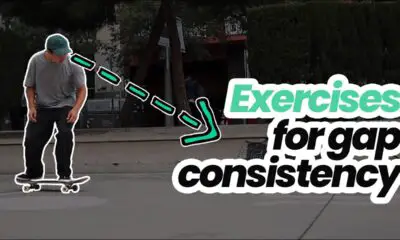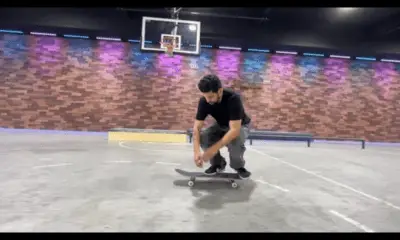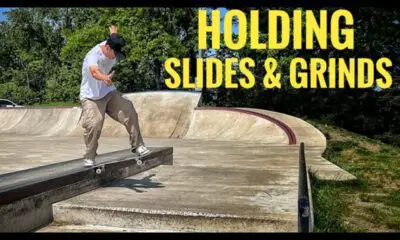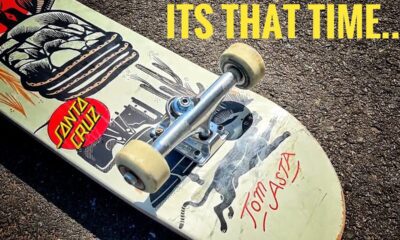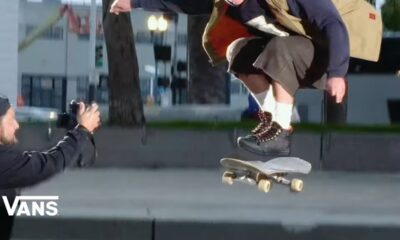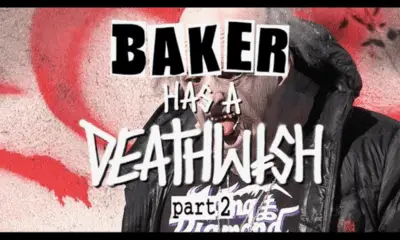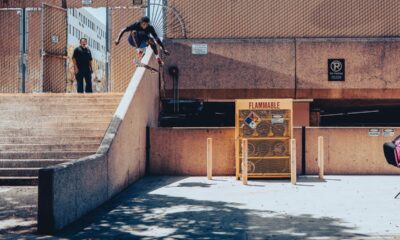HOWTO
A Guide to Buying and Caring for Your Skateboard Bearings
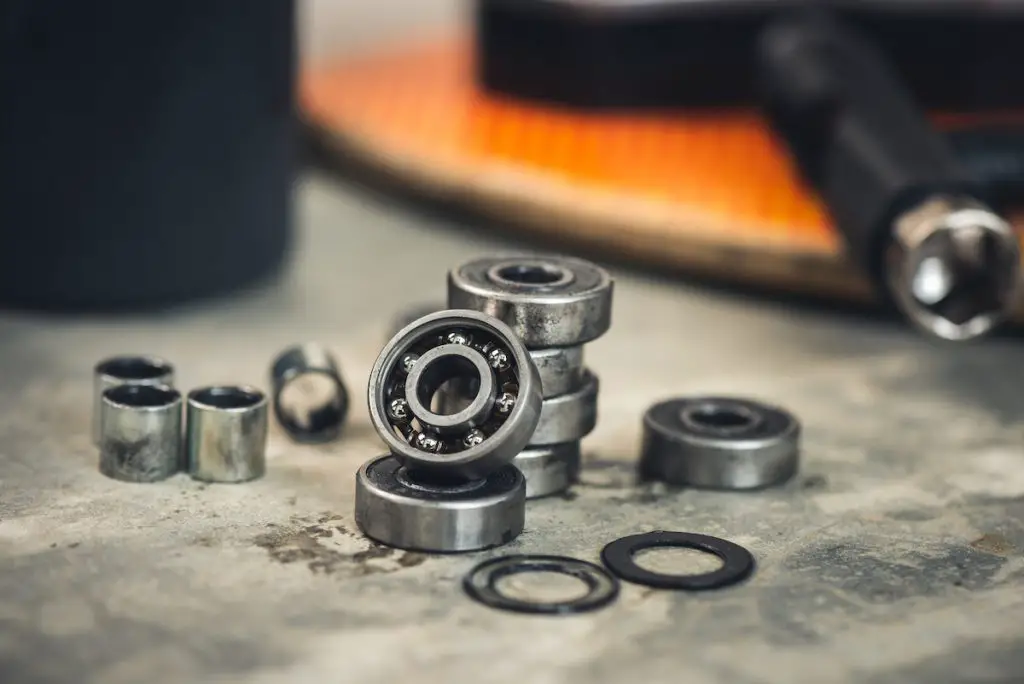

Skateboard and surfskate maintenance concept. Selective focus on the bearing.
Ahh bearings. They may be small, but they’re an important part of your skateboard setup.
When it comes to skateboarding, bearings are a critical aspect of how fast and smooth your riding experience will be.
And because of this, it’s important to ask yourself a few questions like: What are they made of? Are some better than others? How do I remove and clean them? And more.
In this guide we’ll cover all that so when you’re shopping for your next pair of bearings or your next complete skateboard, you can do so confidently.
Table of Contents
What are Bearings?
Bearings are small circular objects put inside the wheel which are usually made of steel or ceramic material. They have a big impact on how fast and smooth a board rides.
Every bearing is made up of five basic components: the shield, inner race, outer race, balls, and retainer. Each of the four wheels will have two bearings placed inside it.
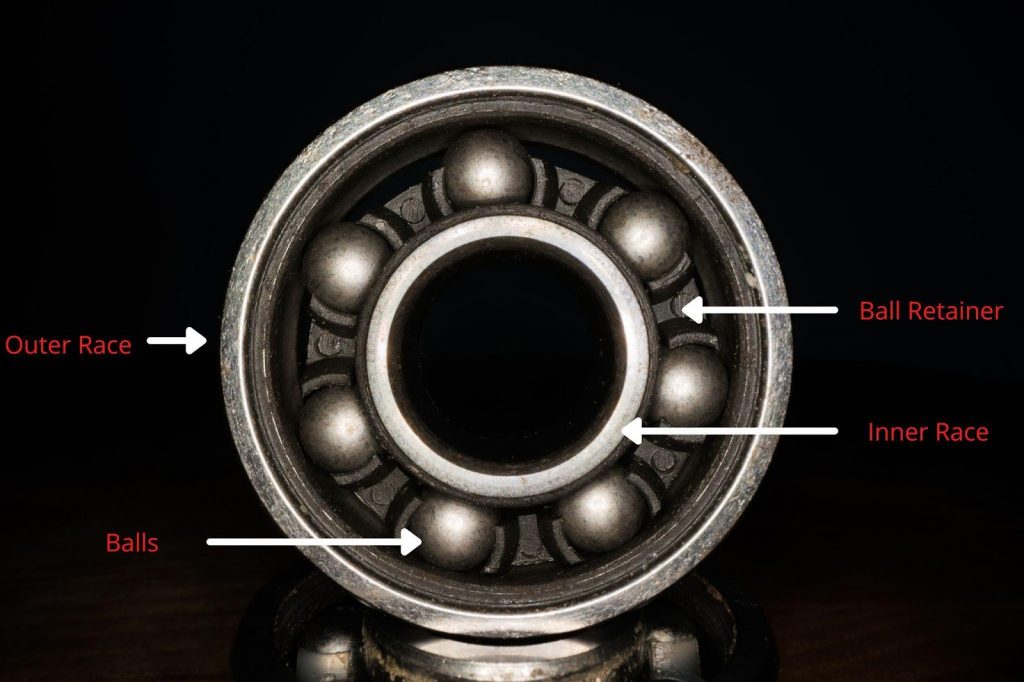

The shield serves two purposes: it retains oil inside the bearing and prevents debris and dust particles from entering it.
The balls of the bearings are housed in the outer and inner races and are what allows the wheels to turn. They sit on the bearing retainers which ensure the balls don’t rub against each other. This reduces wear, limits heat build-up, and overall promotes the longevity of the bearings.
Bearing spacers are also often used for the same reason. Spacers are small metal cylinders placed inside the wheel that limit the amount of force applied to bearings. This extends the bearing’s life and makes turns smoother and more stable.
Steel vs Ceramics vs Titanium
Most bearings are made from steel, ceramic, or titanium.
Steel Bearings
Steel bearings are very common.
They’re more durable than ceramic bearings but they tend to rust with exposure to moisture. These are good options for high-impact skating like jumping stairs, however, you’ll want premium ones if you’re opting more for speed.
While some do perform well for speed, steel rotating often quickly results in a build-up of heat. This causes the metal to expand resulting in more friction between the moving parts, and ultimately slows down the wheels.
Steel bearings are often on the cheaper side so they’re a good investment if you’re not looking for speed and don’t mind cleaning or replacing them more often.
Ceramic Bearings
Ceramic bearings are harder than steel bearings, but more brittle.
They roll extremely well, making them great for speed. And, they’re heat-resistant and won’t corrode with exposure to water.
These go well with any form of skating that has to do with speed, like downhill and even some vert skating. However, for crazy stair jumps where you’ll be landing with high-impact, steel or titanium bearings work better.
Ceramic bearings are often the most expensive kind so keep your budget and your preferences in mind here.
Titanium Bearings
Titanium bearings are similar to steel bearings in their durability.
Where they shine is in their corrosion resistance and heat resistance, making them an overall longer-lasting buy.
They’re generally a bit more expensive than steel bearings but still significantly cheaper than most ceramics.
Best Bearings for Speed
Ceramic bearings are the best for speed.
Their heat-resistant features enable them to spin at high speeds with less metal expansion. When the metal in bearings expands, there’s more friction between the different moving parts. As mentioned earlier, this friction ultimately causes the wheels to slow down.
Because of this, ceramic bearings are a better option if you’re looking to go fast.
Here are a couple of great sets of speedy bearings.
1. Bones Swiss Ceramic Skateboard Bearings
The Bones Swiss Ceramic Skateboard Bearings are highly regarded as some of the fastest bearings available. Being made of ceramic, they’re heat-resistant and won’t corrode with exposure to moisture, giving them more speed and longevity.
2. Bronson Speed Co, G2 Skateboard Bearings
Another set of corrosion and heat resistant bearings, the Bronson Speed Co, G2 Bearings are ceramic made and built for speed.
Best Bearings for Cruising
Choosing a great bearing for cruising comes down more to preferences than it does the benefits of steel vs ceramic or titanium.
Depending on your environment, how often you skate, and how much money you want to spend, certain bearings will serve you better.
For example, with steel bearings being cheaper, they’re a great option if you don’t plan on skating that often.
If you prefer to cruise at high speeds often, investing in ceramics would be your best bet. They’re also a great choice if you want to avoid your bearings rusting from rain or mist.
Ultimately, it depends on your style of cruising. So, consider what that is or what that may be before buying a set.
Here’s our pick to get you going…
Bones Reds Skateboard Bearings 8 Pack
As an industry leader, bones create some of the most highly rated bearings available. Their classic, the Bones Reds, is an excellent set of bearings at a great price.
How to Clean Skateboard Bearings
A great way to increase the lifespan of your bearings is by cleaning them every once and a while.
Thankfully, it’s a fairly short process with just a few tools needed.
Here’s what you need:
- A T-tool/Skate tool OR a Socket Wrench
- A thin tool like a small metal pin, thumbtack, or the tip of a razor
- A bowl or towel to hold the removed parts
- A cleaning solution made of acetone, isopropyl alcohol, or mineral spirits
- A Tupperware bowl for your cleaning solution
- Rubber gloves
- Paper towel
- And a rag or old toothbrush
If you don’t have a Skate tool already, here’s one you can order.
Directions
Remove the Bearings
- To get to the bearing, you must first take off the wheel. Loosen the nuts holding the wheel in place with the socket wrench or Skate tool. If it’s stuck in there, firmly hold your board in place and give it a little elbow grease.
- Place your first nut and washer in your storage pile: either the rag or bucket you brought with you. Repeat this when you get to the other wheels.
- Begin removing your wheel. Angle your wrist as you lift your wheel and use the end of your truck’s axle to snag the bearing off.
- Remove the other bearing from that wheel with the same technique or using your selected thin tool.
- Repeat steps 1-4 for the remaining wheels and bearings.
Remove the Shield Caps
- Take your thin tool and place it in the open space of the shield cap.
- Pry open and remove the shield caps from all eight bearings.
- Place the shield caps in your storage pile.
Use the Solvent
- Put on your rubber gloves.
- Add your solvent to the Tupperware bowl.
- Place the bearings in the Tupperware bowl and cap the lid.
- Shake and swirl the bowl to strip away the grime. Leave the bearings in the solvent for 2-3 minutes.
- Remove the bearings from the solvent and place them onto a paper towel.
Dry and Lubricate
- Gently smack the open side of the bearings onto the paper towel to get the excess solvent out.
- Pat dry the bearings with a paper towel.
- If you have bearing lubricant, drip 2-3 into the bearing and then spin it to spread it around.
- Add lubricant to the remaining bearings.
- Put the shield caps back on. Make sure they click in place.
Bearing lubricant is an essential part of revitalizing bearings. Bones Speed Cream is a high-quality lubricant that increases how fast and long your wheels roll. Get your hands on some to give your bearings the better cleanse they need.
Rebuilding the Wheel
- Put the first washer onto an open axle.
- Put two bearings with the shield facing down on top of the washer.
- With your wheel in hand press down on the bearing until it clicks into place.
- Turn the wheel over and repeat on the other side. Once completed, the shield caps of both bearings should be visible on either side of the wheel.
- Add another washer on the axle followed by a nut.
- Using your Skate tool, tighten the nut. Be sure to leave some wiggle room for the wheel to spin freely.
- Repeat steps 1-6 for the remaining wheels.
After that, you’re done!
When to Replace Your Bearings
Cleaning your bearings is a great way to get some extra life out of them. There will still come a time when they need to be replaced altogether, but cleaning will help them go the extra mile.
Generally, when bearings begin to rust, show significant reductions in speed and smoothness, or begin making noises you’re sure you didn’t hear before, that’s a good indication that they need to be replaced.
Damaged, dirty, and dry bearings can lead to a bunch of trouble. A build-up of dirt on the balls and races of the bearings can create excess friction and heat. This can cause the bearing to freeze up, which can happen out of nowhere, possibly leaving you flying off your board.
The same goes for damaged or extremely dry bearings, which are usually byproducts of dirt and corrosion.
It’s best to play it safe and replace your bearings when they begin to show signs of failure like cracking noises and significantly lower speeds even after cleaning and lubricating them.
Shielded vs. Sealed: What’s the Difference?
Bearings typically come with a detachable shield cap or one that’s sealed on. These are designed to prevent small particles like debris, dust, and water from entering the bearing–things that generally cause damage over time.
Sealed bearings are better at keeping substances from entering the bearing, but they often reduce the wheel’s rolling speed a bit.
My Bearings Got Wet. What do I do?
Rain, puddles, tears of joy when you finally land a 360 Treflip. It happens.
When it does, disassemble your wheel and dry the components as soon as possible.
Excess exposure to water will eventually rust your bearings, so do your best to avoid water when possible.
ABEC and Skate Rated ratings
The Annular Bearing Engineers Committee, ABEC, develops dimensions, geometry, tolerances, and noise requirements for different bearings in order to assist bearing makers in their manufacturing and selection of general bearing applications.
However, a report by Bones Bearings notes that they don’t cover, “Sideloading, impact resistance, materials selection and grade, appropriateness of lubrication, ball retainer type, grade of ball, the clearance between the balls and the races, installation requirements, and the need for maintenance and cleaning.”
While folks tend to associate quality bearings with ABEC ratings, Bones Bearings argues that it doesn’t accurately depict the quality of different bearings, as their tests don’t cover several important aspects of overall bearing performance.
Here are a couple ABEC Rated and Skate Rated options
Yellow Jacket Premium Skateboard Bearings (ABEC)
Bones Big Balls Reds (Skate Rated)
Ride on
Buy quality bearings for your riding style, give them a little love now and then and you’ll be golden. Need help deciding on the right pair of bearings? Feel free to hit us up anytime at hello@skatenewsire.com. Always happy to assist!
HOWTO
How to Do a Nollie Treflip
Tom Rohrer breaks down every step of a nollie treflip (nollie 360 flip)–from foot position, weight distribution, shoulder position, and popping and flicking technique in his latest YouTube tutorial.
Check out his Tom’s Tutorials channel for more skateboarding tips and tricks.
HOWTO
Improve Your Ledge Game with Tom Asta’s Tips
Tom Asta is back to help you get better at skating. This time, he goes beyond the basics and teaches viewers how to improve their ledge game. Watch the video above, and check out his channel for more of his skateboarding tutorials.
HOWTO
Tom Asta Shares the Keys To Skating Nollie
Tom Asta continues to share skating tips and tricks on his YouTube channel. This time he covers how he goes about nollie skating on ledges, bumps and handrails!
-



 TEAM CHANGES5 months ago
TEAM CHANGES5 months agoVincent Milou Bids Pizza Skateboards ‘Adieu’
-



 TEAM CHANGES5 months ago
TEAM CHANGES5 months agoJake Yanko Turns Pro for Welcome
-



 PRODUCTS6 months ago
PRODUCTS6 months agoEmerica & Creature Present Latest Collab
-

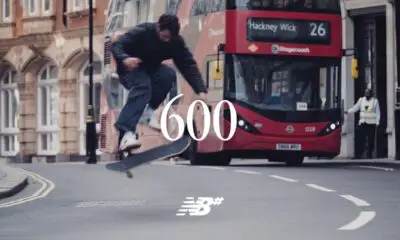

 PRODUCTS5 months ago
PRODUCTS5 months agoNew Balance Numeric Drops Tom Knox 600
-



 TEAM CHANGES6 months ago
TEAM CHANGES6 months agoFlip Welcomes Diggs English to the Team
-



 CONTESTS4 months ago
CONTESTS4 months agoBrazilian Skaters Sweep SLS 2023 Super Crown in Hometown Victory
-



 News4 months ago
News4 months agoThe Berrics is Moving to a New Location
-



 CONTESTS5 months ago
CONTESTS5 months agoIOC Announces Winners of First Let’s Move Street Challenge















